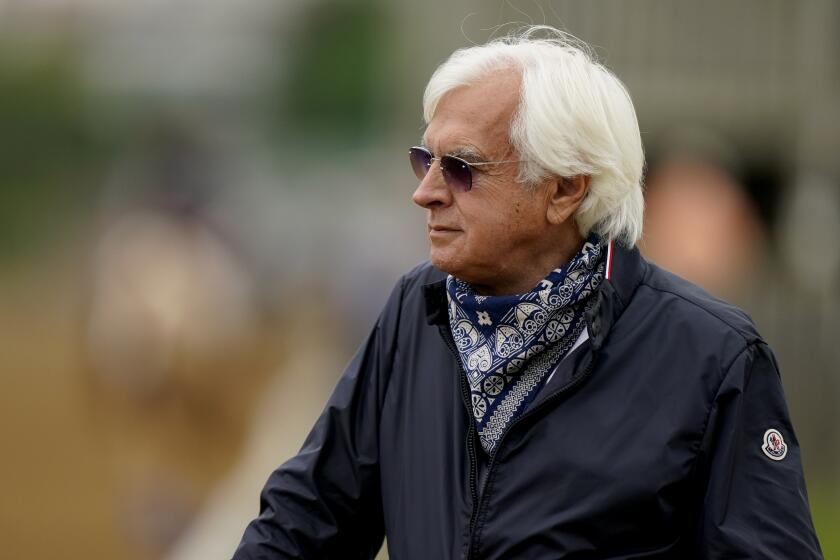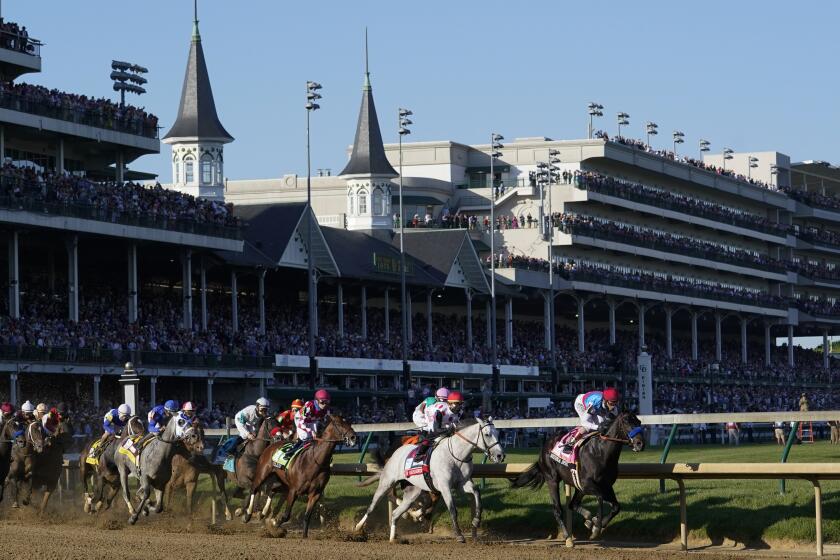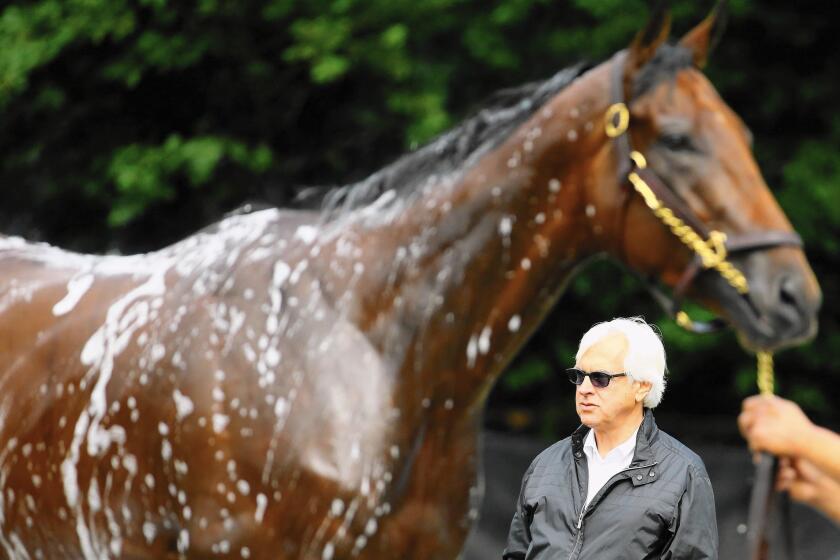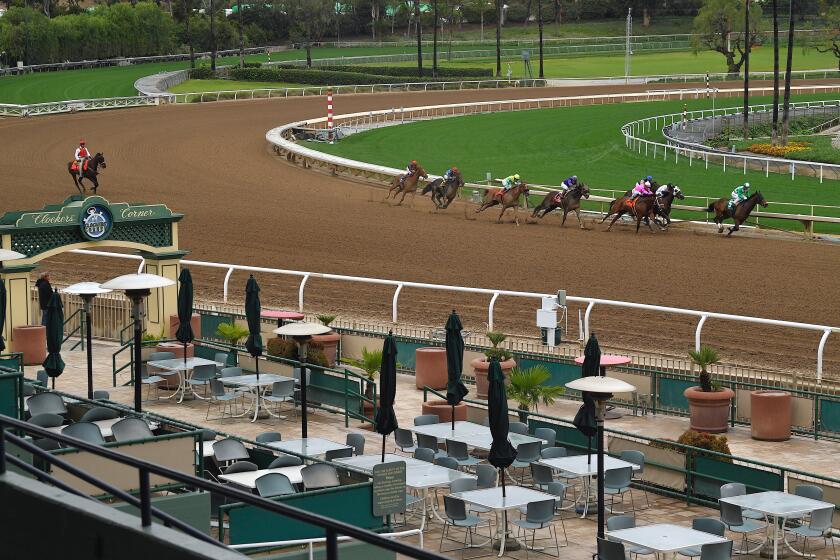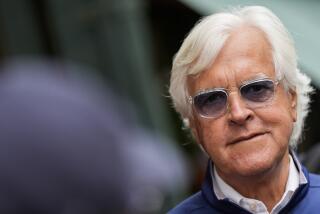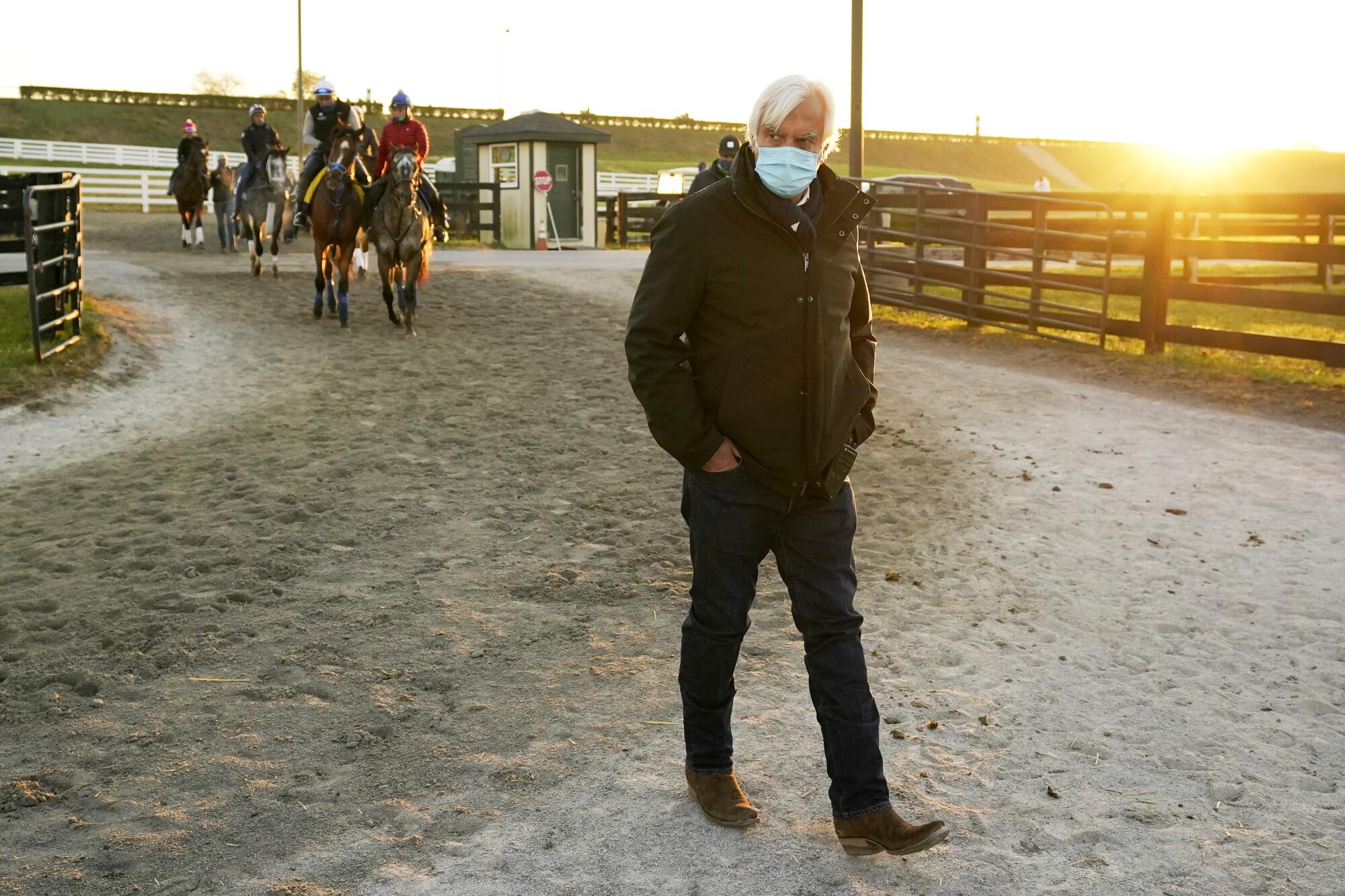
- Share via
In his claustrophobic and cluttered office at Santa Anita Barn 5, Bob Baffert, the hall of fame trainer, was pushing papers and moving stacks, hunting for a faded photo of his 17-year-old self aboard a long-forgotten quarter horse from a small racing circuit in Arizona.
He won his first race on that 1970 afternoon — but not as a trainer.
“See, I bet you didn’t know I was a jockey?” Baffert said. “You wouldn’t know it now.”
No, you wouldn’t.
Baffert parlayed a hobby as a 5-foot-9 jockey into a job as a quarter-horse conditioner into a career as a thoroughbred trainer before jumping onto the highest pedestal of horse racing and becoming the most recognizable name in the sport. Two Triple Crown winners and a signature shock of white hair will do that for a man.
Now 68, Baffert is seeing his livelihood and reputation under attack after a series of medication infractions have made him an outcast to some in the industry and a pariah to many more outside of it. He’s the person few in the business want to talk about, but everyone wants to hear about.
“It’s truly painful when you know what the truth is,” Baffert told The Times earlier this week in his first interview on the subject since May. “There have been so many false narratives that have come up and the hearing process isn’t even done yet. The consolation is knowing the truth will come out as the process plays out.
He paused, then added: “I’ve learned who my friends are.”
::
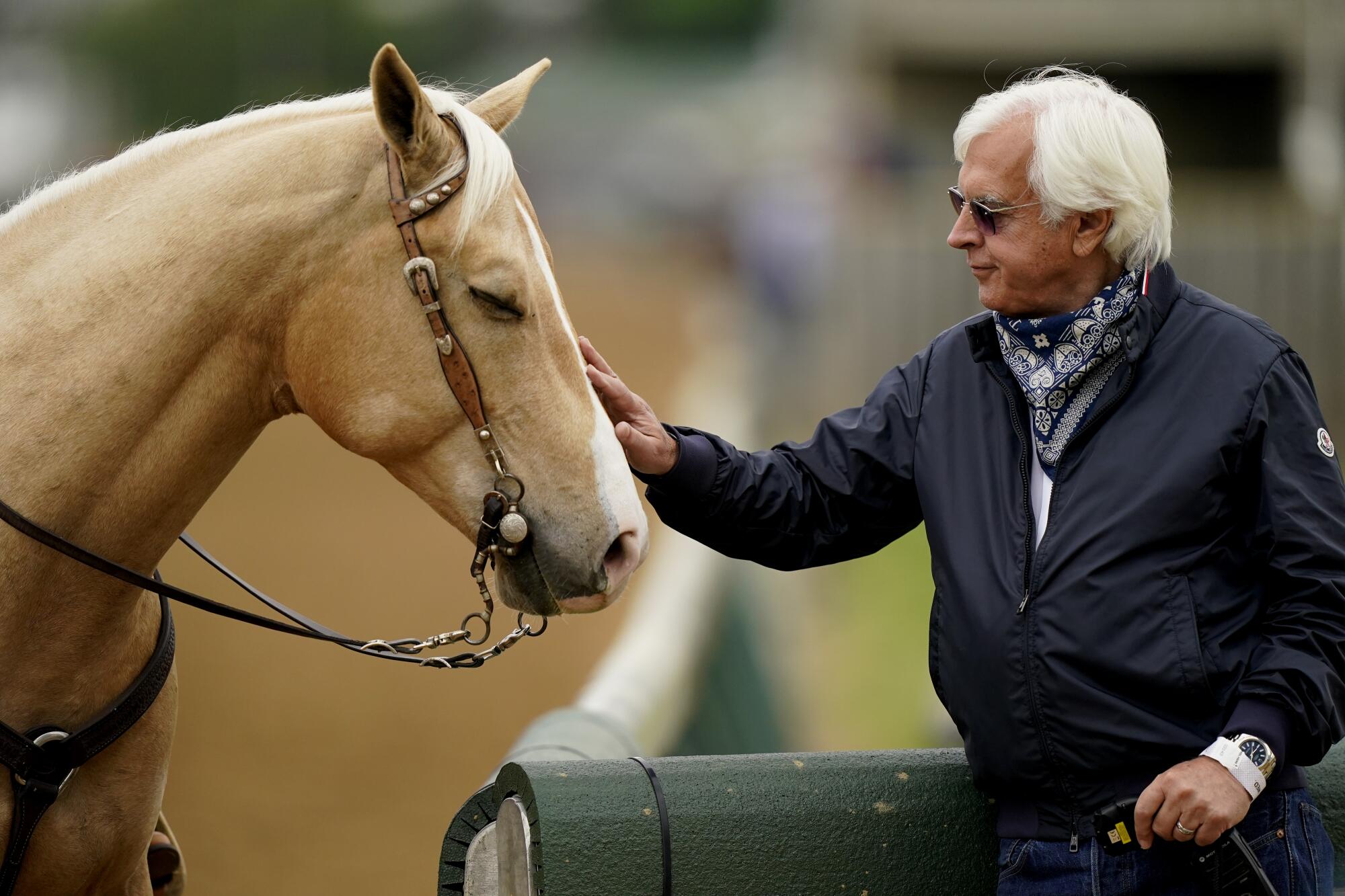
Bob Baffert wakes up most every day with one thing in mind, winning another Kentucky Derby. He’s won seven, more than anyone else in the 147-year history of the race. But that number may drop to six if the Kentucky Horse Racing Commission disqualifies this year’s winner, Medina Spirit, for a medication violation, the trainer’s fifth since May 2020. .
All of the drugs were legal, just not in the amounts found on race day. None of them are considered performance-enhancing in the traditional sense, such as amphetamines or speedballs. Some would argue, though, that if it makes a horse less uncomfortable, it improves their performance.
The first two infractions occurred in May 2020, when the horses Charlatan and Gamine tested positive in Arkansas for lidocaine, a numbing agent. At first it was believed the substance came from a pain-relief patch that Baffert’s longtime assistant Jimmy Barnes was wearing because of back pain. It was later discovered that horses from separate barns had also tested positive. Racing officials ruled that the positive test was a result of contamination and the wins of Charlatan and Gamine were restored. Baffert was fined $10,000.
In July 2020, Merneith tested positive for dextromethorphan, a drug commonly used in cough medicine. Baffert said the horse ingested hay after a groom, who was taking cough medicine, had urinated in the horse’s stall. The trainer was fined $2,500.
Last October Gamine was disqualified from third to last in the Kentucky Oaks after betamethasone, an anti-inflammatory, was discovered in the horse’s system. According to protocols, the medication is supposed to have a 14-day withdrawal period. Baffert said the horse was off the drug for 18 days before the race. He was fined $1,500.
All of the explanations for the positive drug tests are plausible, but collectively they raise questions. Many in the racing world wondered how many times can the dog eat your homework?
“My heart tells me one thing, but my head tells me something else,” said veteran racing journalist Ron Flatter, the managing editor of the website Horse Racing Nation.
Churchill Downs announced that any points earned in the leadup to the Kentucky Derby by horses associated with a suspended trainer would not be counted — a move that seemingly targets Hall of Famer Bob Baffert.
Baffert, a La Cañada Flintridge resident who is currently training his horses at Santa Anita, has not officially been charged with anything related to Medina Spirit. The horse is scheduled to run Saturday in the Awesome Again Stakes at Santa Anita. After Baffert was notified a week following this year’s Kentucky Derby that the colt’s blood and urine sample contained 21 picograms, a trillionth of a gram, of betamethasone, he held a hastily called news conference outside his barn at Churchill Downs saying he had no idea how it could have gotten into the horse’s system.
Another day passed before it was discovered the colt was administered a topical ointment for a rash that contained betamethasone. It was then that Baffert, one of the most accessible trainers in horse racing, stopped talking until this week. Even then, he would not talk about the specifics of the cases against him.
Despite the cautious approach of the Kentucky Horse Racing Commission, which five months later still has not acted on the drug positive, or disqualified, Medina Spirit, Churchill Downs suspended the trainer for two years. It subsequently said any horses running for a suspended trainer (Baffert) would not be eligible for Kentucky Derby or Oaks qualifying points.
The New York Racing Assn. followed up and ruled Baffert would not be allowed to run in New York. Baffert went to federal court and had the suspension overturned, but NYRA has called a scheduling conference on the trainer for Oct. 11.
And the Breeders’ Cup, which will be held Nov. 5-6 at Del Mar, has indicated it will soon make a decision on Baffert’s eligibility to run in those championship races. Several members of the Breeders’ Cup board have used Baffert as their trainer.
Baffert says he plans to seek legal recourse wherever necessary. His primary attorney is Craig Robertson, who represents him in all regulatory matters, but he has recused himself from any action against Churchill Downs because his law firm does business with the company, creating a conflict of interest. Clark Brewster, a nationally known trial attorney who represented adult film actress Stormy Daniels in her defamation suit against President Trump, will be Baffert’s attorney in any litigation against Churchill Downs.
The longest his suspension from Kentucky would be is 30 days, which would be honored by all racing jurisdictions. But it’s a lot more difficult when going against a private company, such as Churchill Downs, which can invoke its own penalties.
———
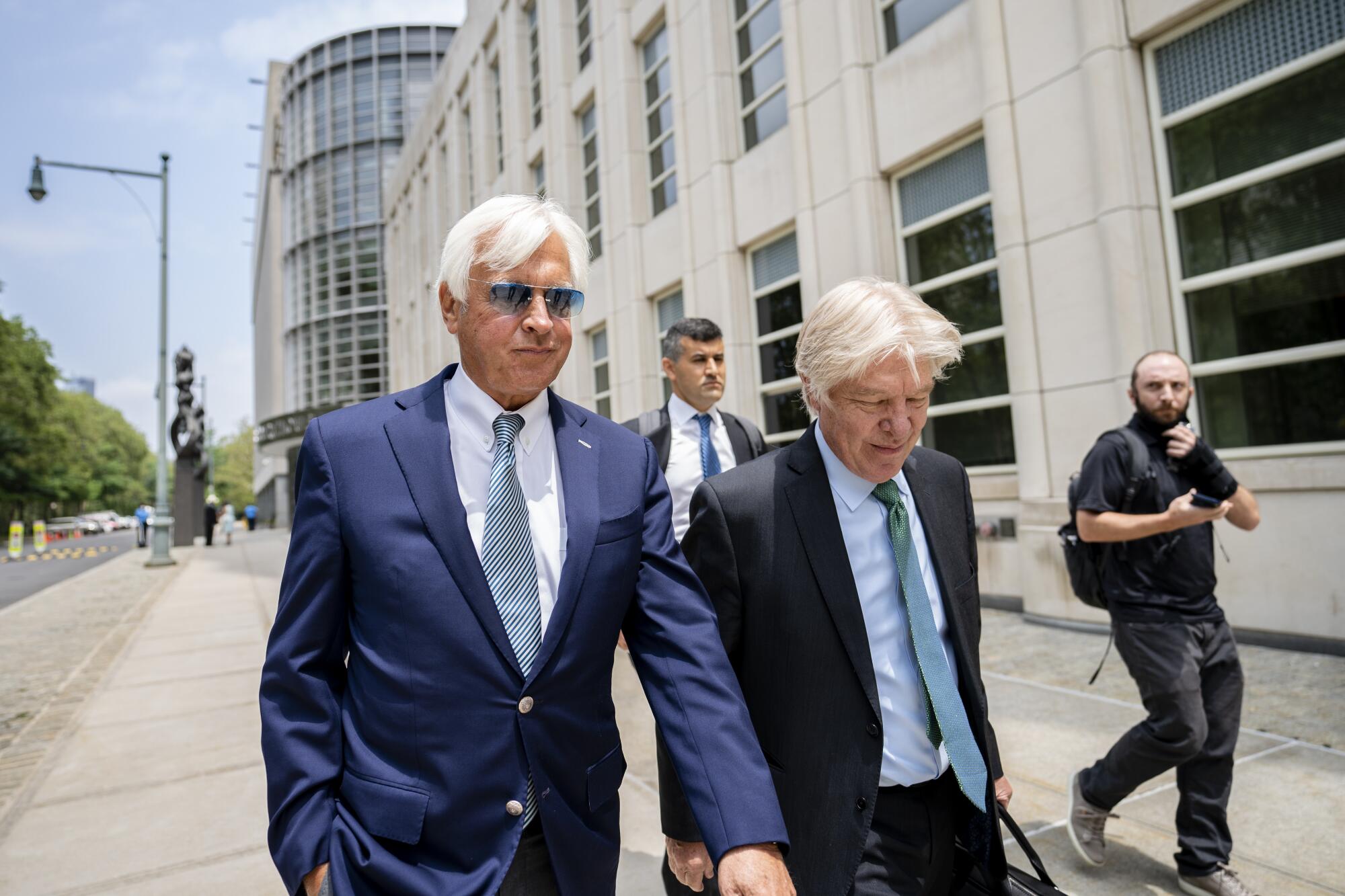
It’s not often that a sport turns against its biggest star, but Churchill Downs has taken that stand.
“Mr. Baffert’s record of testing failures threatens public confidence in thoroughbred racing and the reputation of the Kentucky Derby,” said Bill Carstanjen, chief executive of Churchill Downs Inc. “Given these repeated failures over the last year, including the increasingly extraordinary explanations, we firmly believe that asserting our rights to impose these measures is our duty and responsibility.”
Baffert has had more than 30 drug violations in his 44-year career, according to the Louisville Courier-Journal. Most were for excessive use of phenylbutazone, a commonly used anti-inflammatory known as bute. Racing does not have a historical database for violations, with most of the information kept on the state level.
His most serious infraction was also his first. In 1977, as a part-time trainer, he was suspended for a year when one of his horses tested positive for morphine. Baffert said in his autobiography it was a combination of ignorance and desperation. It was an easy suspension to serve as Baffert was in school and not doing much training. Baffert did not have another medication violation for eight years.
Baffert has also had his share of horse fatalities, the other metric to which his critics point. According to data provided by the California Horse Racing Board and supplemented by The Times’ research, the trainer has had 75 horses die since 2000 either racing, training, or by illness or non-exercise accidents.
Betamethasone is mostly injected into the joints of horses to ease inflammation and, if the inflammation is reduced, any associated pain subsides.
Baffert has had two fatalities in the last three years, a low number for a barn of his size. Carson Valley was killed in a freak accident in 2019 at Del Mar when a loose horse crashed into the Baffert trainee. And Noodles died May 22 of a non-exercise induced respiratory issue. In the past three years, there were 188 deaths involving either racing or training in California. There were at least 39 trainers with more fatalities to their name than Baffert during that period.
Baffert often speaks of his life as if it’s a Shakespearean play, humankind’s tragedies mingling with his own existential crises. A recent conversation about the tragedy of horse deaths wended its way back to the defense of his reputation.
“Being a horse trainer is tough enough because it’s such an up-and-down, emotional roller coaster,” Baffert said. “There are highs and lows and a lot of disappointment. If you lose 75% of the time, you’re considered really, really good. [As for what’s going on now,] I don’t like it but I’m dealing with it. We’re going to get through it.”
———
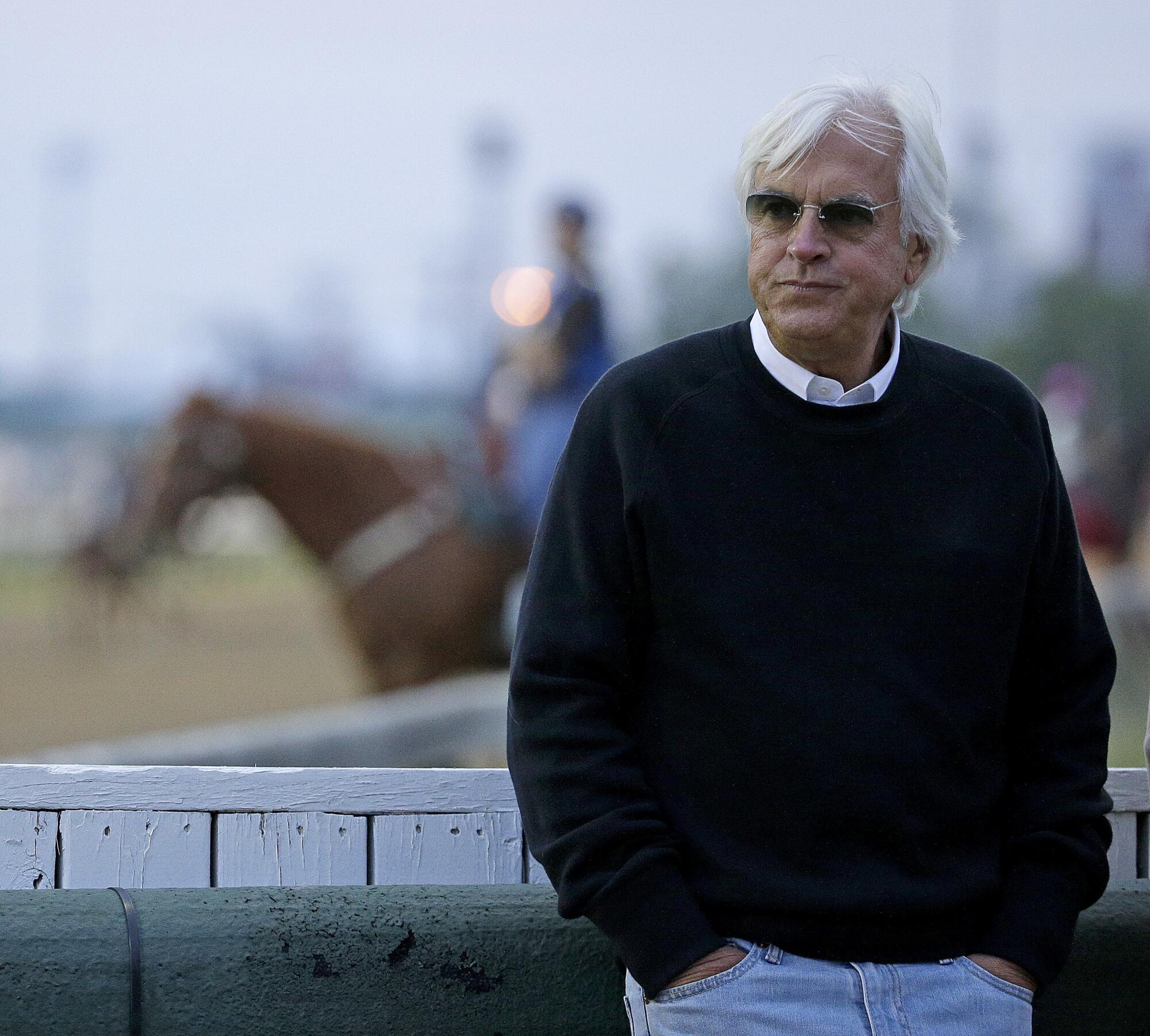
Baffert is the biggest name in horse racing, even bigger than the animals he conditions. His white hair, tinted glasses and accessibility make him a natural to promote the sport. And promote he does, chatting with people he met one minute ago as if they were long-lost friends. He views himself as an ambassador for the sport.
“Does his love of the camera sometimes bite him?” asked longtime owner and friend Mike Pegram. “Yeah, but that’s what drives him. He’s always wanted to be a rock star and some people don’t think racing should have one.”
It takes only a minute or so to walk from the racetrack at Santa Anita Park to the barns in back.
On the morning of this year’s Kentucky Derby, he was going through his list of past Kentucky Derby winners and should-have-been winners, and dismissed Medina Spirit as “not the best horse in the race.” Things would have been so much simpler if the horse had not won the race. Baffert, however, wouldn’t change the outcome.
“That was one of the most exciting and enjoyable Derbies,” Baffert said. “We went there with expectations not very high. I went under the radar. I thought we’d get fourth.
“When I won with [Triple Crown winners] American Pharoah and Justify, it was a relief. This was fun. It bothers me when he’s not considered the Kentucky Derby winner.”
———
Baffert grew up on a cattle and chicken farm in Nogales, Ariz., near the Mexico border. He was 10 when his father, Bill, bought a couple of quarter horses, plowed some land for a track and Bob started riding them before school each morning.
It wasn’t long before Baffert was making pocket change riding the horses in match races. He won the aforementioned first race at a sanctioned track in 1970, but his mother insisted he attend college and he enrolled in the University of Arizona’s Race Track Industry Program. He tried his hand at substitute teaching before he started training horses full time.
It didn’t take Baffert long to dominate Rillito Park and Prescott Downs in Arizona. He made the jump to Los Alamitos, where he was running against such legends as Wayne Lukas. He built up his training business a step at a time and acquired some prominent owners. Hal Earnhardt, an Arizona car dealer and Baffert’s oldest client, introduced him to Pegram, who made his money in fast-food franchising.
Pegram persuaded Baffert to try thoroughbreds.
“We had some thoroughbreds with another trainer and I’m thinking how can we make money with Bobby running for $4,000 at night when we could be running for $40,000 during the day,” Pegram said. “What we knew about horses you could put in a thimble. Bob had the personality and he was honest. You could trust him and that never changed.”
Baffert’s breakthrough thoroughbred was Thirty Slews, who won the Breeders’ Cup Sprint in 1992. In 1997 he won his first Kentucky Derby with Silver Charm. He followed it with six more Derbies, two of which launched Triple Crown runs, with American Pharoah in 2015 and Justify in 2018.
Between November 2011 and March 2013, however, Baffert had seven of his horses die of sudden death, not on the race track. The California Horse Racing Board cleared Baffert of any wrongdoing, but with reservation, calling such a cluster of deaths a less than 1-in-1,000 occurrence. Baffert, like many trainers, was using a thyroid drug that was cited in the CHRB investigation.
Kaleem Shah, an owner who split with Baffert in 2016, defended the trainer over the horse deaths.
“Some of the horses that have died have been my horses, and on each and every instance, I have spoken to Bob and I’ve been more than satisfied with the explanation,” Shah said.
Shah said the two parted over disagreements that should have been resolved, without being specific.
“In fact, at some point I’d like to get back together with Bob,” Shah said. “It’s more the friendship that I miss. He’s a very unique personality, a unique sense of humor. ... He will rub people the wrong way by speaking his mind, sometimes he needs to hit the mute button.
“But he’s Bob, he has to speak his mind.”
———
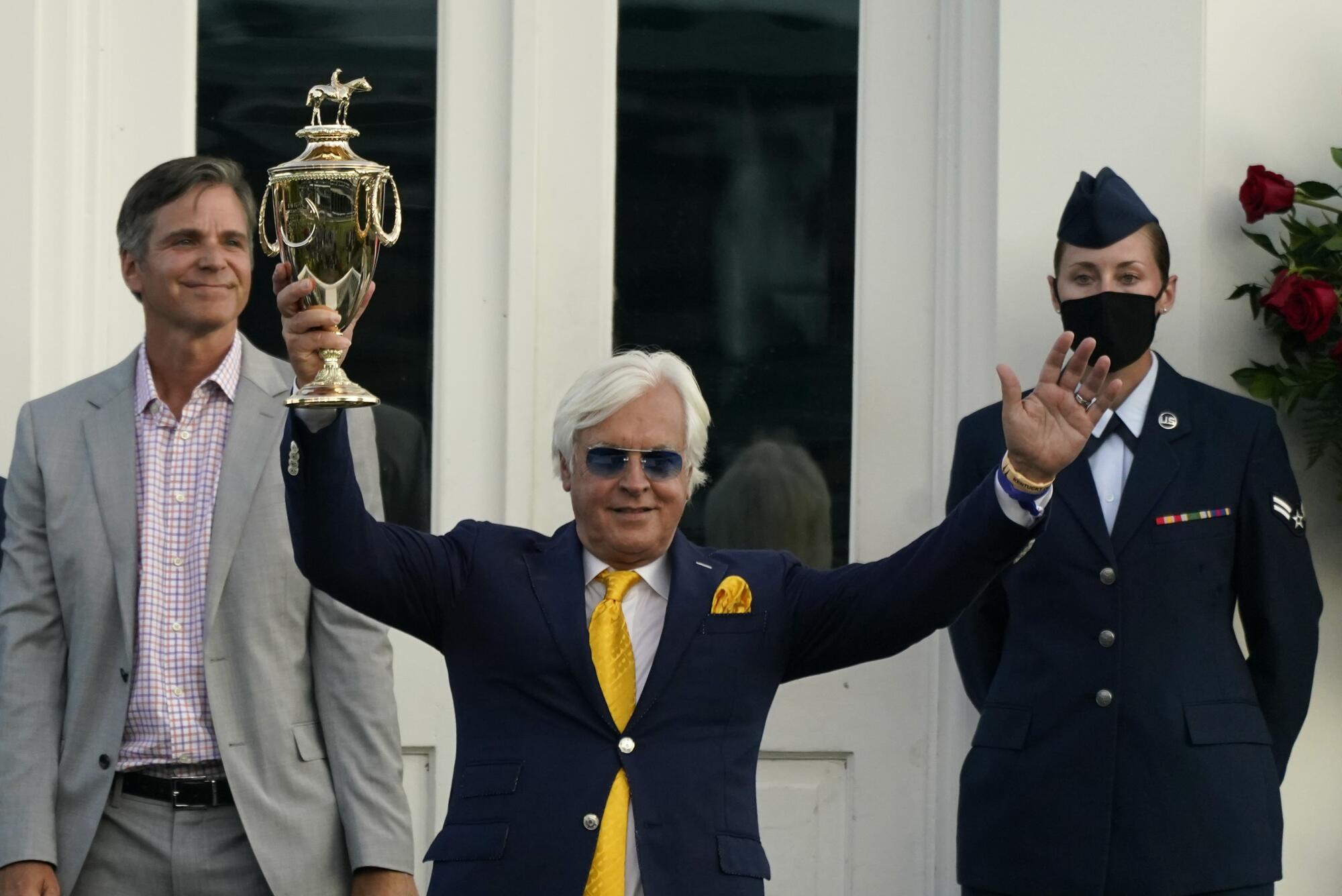
Those who have known Baffert the longest, including a core group of owners, recognize his flaws but generally remain steadfast in their support of him.
“Anybody who walks with that swagger, people are going to love him or hate him,” Pegram said. “Has his success made people hate him more? Yeah, sure, he’s a wiseass and irreverent. But he’s a good person, no, a great person. I’ve heard the rumors on Bobby since we got in the business after winning some Cal Cup races. It’s all because of his success.”
Doug O’Neill, a two-time winner of the Kentucky Derby, was one of the few trainers who would talk about Baffert’s recent troubles.
“Medina Spirit had a legal medication in him,” O’Neill said. “To me, what’s in the best interest of the sport is not seeing anyone being dogpiled on.”
Another person who came to Baffert’s defense was his former assistant Tim Yakteen, who now runs his own stable. In April, after Arkansas reversed its decision on two Baffert horses and overturned his suspension, trainer Richard Baltas was bad-mouthing Baffert at Clockers’ Corner, the place where trainers and fans watch horses work in the morning at Santa Anita. Yakteen rose to Baffert’s defense and it ended with a scuffle that slightly injured a security guard. Both trainers were fined $500.
For every Baffert defender, you can find someone on the other side.
Until this summer, Baffert was the longest-serving member on the board of the Thoroughbred Owners of California, having been elected in 2007. But in the most recent election in June, he finished seventh of eight, the only incumbent beaten. Gary Fenton, chairman of the TOC, declined to be interviewed.
“In the court of public opinion, he’s a big loser,” said Barry Irwin, owner of racing group Team Valor and an outspoken critic of race-day medication and Baffert. “He has never apologized to the public for trashing the game. He still has a responsibility as the face of the game … but I don’t think he’ll overcome [this] because his personality won’t allow him to do it.”
Santa Anita’s 16-day fall season begins Friday with 14 stakes races over three days as trainers and owners take aim at the Breeders’ Cup at Del Mar.
Mick Ruis, who trained against Baffert for a couple years but now just manages his own racing business, once admired Baffert and his success, but no longer.
“Horse racing needs to cut off the head of the snake,” Ruis said. “It’s so obvious. Time after time it’s not his fault. … It’s just disheartening. Why would people want to be betting on horses when there are allegations and there are real positives and he’s getting off on technicalities.”
Ruis is suing the CHRB for absolving Baffert of a positive for scopolamine, a byproduct of jimsonweed, after Justify tested for the drug after winning the 2018 Santa Anita Derby. Ruis’ horse, Bolt d’Oro, finished second. The CHRB ruled it was caused by feed contamination, citing six other horses across four barns who also tested positive.
Unlike a normal day at the races, Baffert’s fate will not be decided by a photo-finish camera or the actions of a jockey aboard a 1,000-pound animal. It will all be settled by lawyers and judges and that takes time. Only once has a Kentucky Derby winner been disqualified for a medication violation.
It took four years to be resolved.
More to Read
Go beyond the scoreboard
Get the latest on L.A.'s teams in the daily Sports Report newsletter.
You may occasionally receive promotional content from the Los Angeles Times.
